Play Xodd interactively
Terminology
- Group: a set of orthogonally connected, like-colored stones on the board.
- To drop: to place a stone on any empty point.
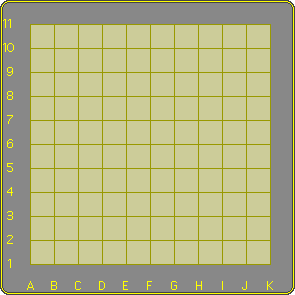 | Rules The game starts on an empty board. There are two players, white and black.
Note that there's no actual counting involved in the non-parity rule: just keep it odd. |
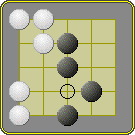 |
 |
Examples On the left there are 5 groups in total. If a black stone is played at the marked point, there will be 2 groups less on the board, so parity doesn't change. The diagram on the right shows a legal move for either player. Note that the second placement doesn't change parity either. |
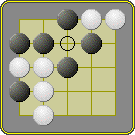 | 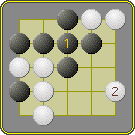 | On the left there are 7 groups total. Playing a black stone at the marked point reduces the group count by 3, so the total number of groups will be even. The second move of the turn must change the number of groups back to an odd number, as in in the diagram on the right. |
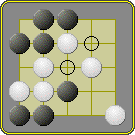 | 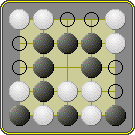 | Left: Black may want to play two black stones at the marked points to prevent white from connecting his groups, but he can't because he would need another move to restore the group count to an odd number. Right: Both players have passed for lack of useful moves. Black has 4 groups to white's 5, so black wins. Note that white would need to play at a pair of consecutive marked points to join any two of his groups, but that would only reduce the group count by 1. If he plays at two non-consecutive points, black would immediately take the adjacent ones. |
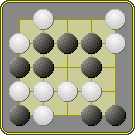 | 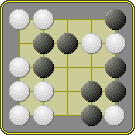 | Two final positions won by black. Black has moves available in both. On the left he cannot increase white's group count. He can extend some existing groups. On the right he can drop a white man in the middle, but then he can't restore non-parity. White has a similar problem with the top-left corner on the left, whether the dropped stone be black or white. |
External links
Xodd © Luis Bolaños Mures
